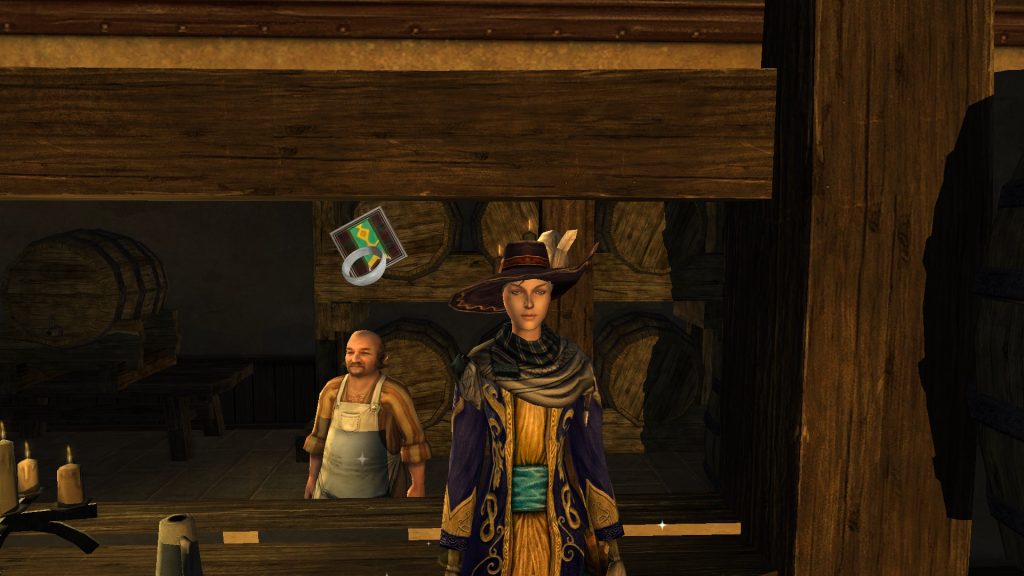The autumn is closing in. Virus panic and coronaphobia have meant that I’m more or less sealed in the house, with occasional outings to the supermarket for the necessities of life. What social life I did have before COVID-19 swept up out of Asia and plunged us all into an economic and social future resembling a cross between Nineteen Eighty-Four and some Steinbeck-y sort of thing about how life was real during the Depression, is largely online now. It was largely online then. It’s a smidge colder, but the news isn’t crammed full of rugby crap, so it balances out. Except for the pubs being closed, life has hardly altered at all.
Not so for the paper wasps. Self-isolation has cut them off even from other paper wasps next door. Across the road might as well be another country for them. Not only can’t they get there, but the airline they booked to get there on has somehow crumpled like an abandoned nest which has been run over by a pre-abandoned shopping trolley.
So much for topical references. I might not—I definitely don’t—understand why Virgin has gone under. I’ve flown them a couple of times and, having discovered they’re not much different to Qantas domestically, wouldn’t fly them again. Less service for the same price? fFights scheduled to leave at 2:30 which never leave at all? And two or three hundred regional airports they don’t even bother to serve once a week? I have the flying kangaroo for that! They could’ve offered an alternative, but they chose not to.
Will TWINE do any better at competing with older, more normal forms of literature? Can we even legitimately stretch an airline analogy to cover the activity of two modes of narrative? Damn right we can!
Because, if we can’t, this isn’t creative non-fiction.
After all, TWINE and conventional narrative are attempting the same job, just as Virgin and the other airlines are doing. The ultimate goal of narrative is to tell stories, the ultimate goal of airlines is to inconvenience the peripatetic and make them pay for the privilege.
Posted TWINE
This week, a lot of the people in BAWRT 2004/3004 posted their first TWINE games. Most of them were much more literary than mine, but then so were the narratives that each person had written and bzsed their game on. My original story was more or less a travelogue (around Ballarat, too) with a cute logical ending, and the game became that, too. Even though we were supposed to keep them simple, we had a two-week break over Easter, and these things are so easy to write, and so easy to make narrative branches of, that restraining myself to keeping it simple, by keeping the word count of the game close to the word count of the original story, meant I couldn’t restrain myself. I put branches in the narrative that seemed fun at the time. I wasted an inordinate amount of verbiage, even for me, taking out my spleen on various types of movie that you might see in a cinema nowadays—or would’ve seen before what I’m hoping future people will call, in a science-fictiony way, the Covidity.
Some people have remarked on how humorous mine was. Well, that was the idea. The original narrative was meant to be light-hearted, so the TWINE story should match that, and it seems it has. But others have been literary, or quite moving, or both. Some have had much better hooks than mine did, and some have left me wanting more, so I hope they do their final project as a TWINE game. I sure will be.
Writing the game has shown a few problems with TWINE, though. I was wondering how you’d cite a TWINE game. You could put page numbers on each screen or ‘passage’ in a game, but they wouldn’t have a sequence unless you, by some happy chance or just being railroaded into one narrative line, be in any sequence. But if you’re citing the game, you could refer to the page number and hope someone found it eventually when they wanted to verify your source.
Also, saving a game has proven problematic for a few people, including me. But then, a couple of people were able to read my first saved and submitted game with no problems, whereas I wasn’t able to. It seemed to save the game as a text document, not a HTML file. You’d think WordPress would’ve gotten me used to bizarre shit happening with HTML in the name of convenience, but I had trouble actually getting a HTML file out of TWINE. Other people seemed to have none. (Parenthetically, I’ll say that the problem is solved by renaming the file with a .html extension.)
What does it mean, literature-wise?
The most important thing about electronic literature, especially where it’s interactive and requires some action from the reader, is that the reader has an effect on the from of the narrative. Where choices exist, the reader shapes the narrative by making those choices. In TWINE, you can even shape the reader’s choices by adding in additional consequences from each choice, and thus motivations for the reader to make a given choice. For example, you can add measureing tools to affect the character’s happiness, boredom, dedperation etc and the reader can, through their choices, affect how the character is feeling and what they can do.
This addresses a complaint about ‘choose your own adventure’ narratives. In these, the protagonist’s character doesn’t grow because the reader is the protagonist and their character is outside the author’s control and, since the adventure can go all over the place based on choices and page flipping, the protagonist can get to certain character-growing incidents more or less randomly, or through different chains of scenes. Ideally, any chain of scenes will read like a normal narrative, but jumping around various scenes to get to the ‘growth moment’ for the character strains credibility for the reader.
At this point I’d like you to imagine a play like that. Actors come on, do their thing, but in each performance scenes are ordered randomly. Does it strain coherency to the breaking oint? Does that even matter? In the sense that art is supposed to generate an emotional response, no. But there ought to be more to more to narrative than just feeling bamboozled, enlightened, quizzical or $110.95 more broke.
But, if certain choices cause reduced happiness, or increased hunger, or radically changed dandruff in the protagonist, and the reader can choose to make that happen, then the author surrenders some control of the narrative to the reader. At least, the author can provide the illusion that he’s surrendering control. After all the author has written down all the choices that the reader can make in the TWINE game, so where does the control really come from?
Well, the control of the reader comes from the author, who can limit the choices the reader has. The control of the character comes from the reader who makes those choices. Both have agency. The reader’s is immediate because their choices affect which screens they go to and what happens to the character in each reading. The author’s control is more remote, but they provide the framework from which the reader’s control comes, and they can control the reader, or at least motivate them, by what consequences for the character they can contrive within the narrative.
Modality
The author’s control extends by designing consequences for the reader to embrace, avoid or ignore. By including other modes within their electronic narrative, something beyond the power of a printed work, they can influence the reader’s emotional responses to each screen within the text. Music is the most important tool here, as it is in other meida like films, but colour can also work, as can sound effects. In my own TWINE game, for example, bells are an important part of the story, so I could put the sound of a bell each time you transition to a new screen in the game. The bell sound could be pitched higher or lower depending on the situation into which the reader has clicked. A hight pitch bell is a happy bell, a low-pitched bell is a sad bell. The pointhere is that I, or any author, creates these effects by the scenes they create.
And that’s only sound. There’s colour, font and background pictures to use, too. One day, there might be smell. Another aspect possible with some really adroit coding is to deduct money from the reader’s bank account so that they literally pay if they make the wrong choice. Questions of the legality of that last one aren’t germane to the study of electronic literature, but we can discuss them in greater detail as soon as I can find a nice island without an extradition treaty.
New Art, New Critique
Electronic literature, of which TWINE games are a subset, is a new form of literature. Well, it is using a new medium, with possibilities that traditional media didn’t give literature. Some people have taken this to mean that it is a new type of literature since, they argue, it isn’t bound by the constraints of storytelling, narrative, characterisation etc but can still be good. But if it can neglect those things, how can it be good? The quality of literature, certainly if it’s not ‘genre fiction’ is storytelling, mirative, characterisation, so how does changing the medium change what makes it good?
This new art demands, or perhaps generates, new criticism. A much better discussion of that is over here. I’m not buying the parts of this new critique I can even understand. Sure, there’s a new medium, but to repeat myself, the criteria of quality don’t change. What criteria can you add to e-lit to show its differences from conventional, printed literature?
Of course, you can be arbitrary about it. People did make commentaries on what constituted a good website as soon as browsers were invented that could make a webpage resemble a magazine page. But the criteria were the same as those applied to a magazine page. Ultimately, what changes between conbentinal prined literatutre and hypertext, e-lit or the combinaton of HTML and other effects that is summed up as ‘hypermedia’ is that flipping pages went from a lengthy process that required some surveying of page numbers and, at least in magazines, the possibility that an ad would grab your attention and you’d read the copy, to a simple click. That’s the difference the electric Internet and ‘computers’ (where we define a phone as a computer) that access it provides.
Esoteric criticism, database replacing narrative, naïve amazement with the miracle of communication that is the World Wide Web that always reminds me of the fascination film critics have with the moving image, even if the moving image isn’t doing anything of consequence – these all count for nothing against the traditions of narrative that have gone through the natural selection of the literary ecology and won out because they best match what we’ve evolved to like. Or rather, those characteristics of literature that are the least worst solution to whatever need or gap stories satisfy or fill. Will e-lit develop to the point where it has conventions that satisfy us, but which we – well, I – can’t even guess at?
It’s all at the whim of this damn virus.
And, need I say, the wasps.





